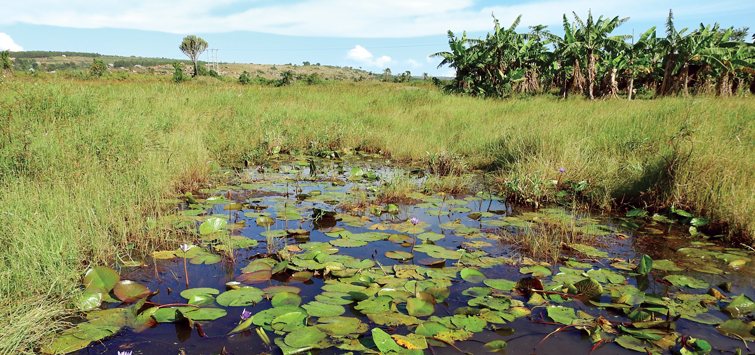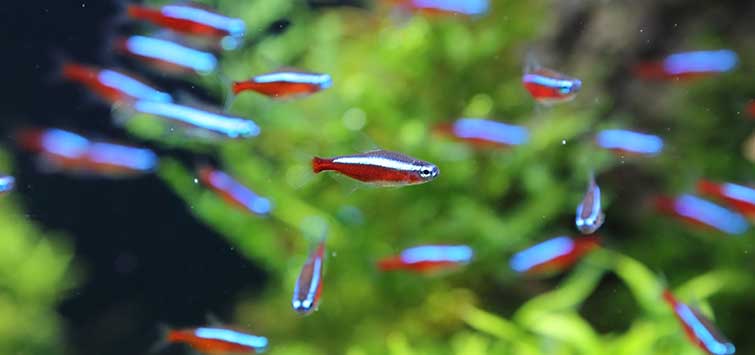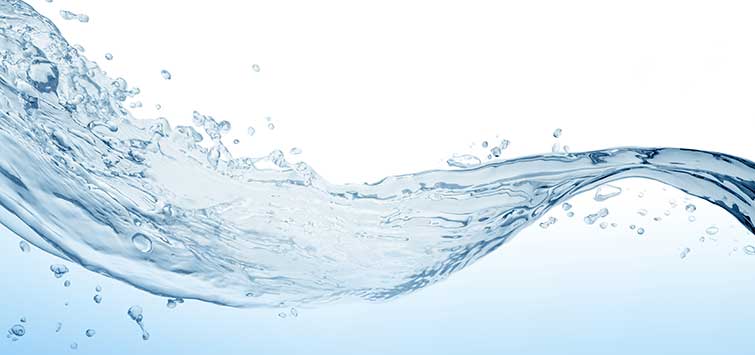Discovery of 3 Killifish Species Around Lake Victoria
Author: Béla Nagy
Lake Victoria is a mystical and mythical place, located in the highlands of Africa along the Great Rift Valley. The largest lake on the continent, its shoreline runs along three countries: Uganda, Tanzania, and Kenya, an area that has borne witness to some of history’s most magnificent episodes.
At the time when the explorations of the then-unmapped interior areas of the African continent began, Lake Victoria was often mentioned in the legends surrounding the epic search for the source of the Nile. And the lake has its own myths and superstitions; it is said to be ruled by a water monster, called Lukwata in the Luganda language, that attacks fishermen. Since our research team was conducting an expedition to search for annual killifishes during a trip around Lake Victoria, we were afraid that our activities might provoke the fury of this creature.
A few centuries ago, large parts of Africa were terra incognita, unexplored lands that had frustrated expeditions since the days of the ancient Greeks and Romans searching for the source of the Nile. The upper reaches of the river basin in the heart of Africa had long been impenetrable. Large, swampy areas, malaria, and hostile tribes blocked all kinds of exploration, making the source of the Nile one of the biggest geographical secrets in history. Our expedition, however, we were expecting to be a peaceful and easy journey.
In Search of Seasonal Killifish Species
Our goal was to research the annual killifishes belonging to the genus Nothobranchius that live in temporary pools and swamps in the floodplain of seasonal rivers in Lake Victoria’s drainage basin. The natural habitats of these strikingly colorful seasonal fishes temporarily dry out during the dry season. So, in a remarkable adaptation, the adult fish deposit their eggs into the muddy substrate of the biotope, where they survive the dry season while undergoing development with intervening rest periods.
With the onset of the next rainy season, the tiny juveniles hatch. They only have a couple of months before their habitat dries out again, so they must develop very rapidly, reach sexual maturity, and lay their own eggs to secure the survival of their species. The repetition of this amazing cycle of life is a reminder of how wonderfully nature is organized.
The timing of our research trip, early June 2019, was planned so we would arrive in the region just after the rainy season, when the biotopes are most likely to be filled with water and fish. In Africa, people traditionally practice rituals for everything, including rainmaking. So it was only fitting, as the arrival of the rainy season is somewhat unpredictable every year, for us to ask the rain god to provide good conditions for our voyage.
We planned to start our expedition from Entebbe in Uganda and drive around Lake Victoria through Tanzania and Kenya. As in our previous Ugandan trip a couple of years back, I traveled with Kaj Østergaard, who had established residency near Entebbe. In addition to being a pioneer discoverer of several Nothobranchius populations, Kaj is also a passionate birdwatcher, so while traveling with him we could expect some birding observations as well. Another friend of mine, Gábor Petneházy, who had accompanied me on past trips to Chad, Congo, and Uganda, joined us.
After our arrival in Uganda late in the evening, we enjoyed the hospitality of Kaj at his beautiful waterfront house overlooking Lake Victoria. Despite all the welcoming conditions, we did not stay long, striking out on our expedition the next morning. We were on the road for about an hour when we spotted and photographed a shoebill in one of the roadside swamps. Bird fans will understand that this is a relatively rare event, and Kaj declared that it would be the birding highlight of our trip.
The Western Shore and Discovery of a Previously Unknown Nothobranchius Population
We headed from Entebbe southward, and after crossing the Tanzanian border, we spent the night in the lakeside town of Bukoba. We stopped only once in Uganda, at a site near Kalisizo. We had collected Nothobranchius robustus at that site two years earlier, a killifish species whose males display an especially beautiful red color. As the population from the specimens we had caught during that previous trip were still nicely reproducing in aquariums at home, we made only a quick stop to confirm the presence of the fish in the habitat and then continued our journey south.
After the border, we crossed the Kagera, which is the largest river that flows into the lake and considered to be the long-sought source of the Nile. We stayed in Bukoba in a guest house with a lovely garden that Kaj had discovered on a previous occasion, and we all enjoyed a cold local beer in the hot evening on the terrace overlooking the lake.
The presence of seasonal fishes in temporary habitats is linked to the local weather conditions, namely the onset of the rainy season. Lake Victoria has a temperate warm and humid climate with long, heavy rainfalls from March to May and usually a shorter rainy season from October to December.
As we reached the southeastern edge of the lake, we experienced ideal weather conditions and found many rain pools. We caught beautiful lampeyes in a habitat with water lilies near Kiziramiaga and collected two species, specimens of the attractive Lacustricola centralis and the more common L. bukobanus. Then, the next pool, near Chato, offered us a real treat, as we found an unknown Nothobranchius population in the turbid water.
Based on the attractive color pattern of the young but already colored-up males, we immediately recognized that we were dealing with a yet undescribed species, which we called N. sp. “Chato.” After combined morphometric and genetic analyses following our trip, I recently described this Lake Victoria fish along with my research colleagues as a new species, N. venustus.
The Southern Shore of the Lake, Where History Repeats Itself
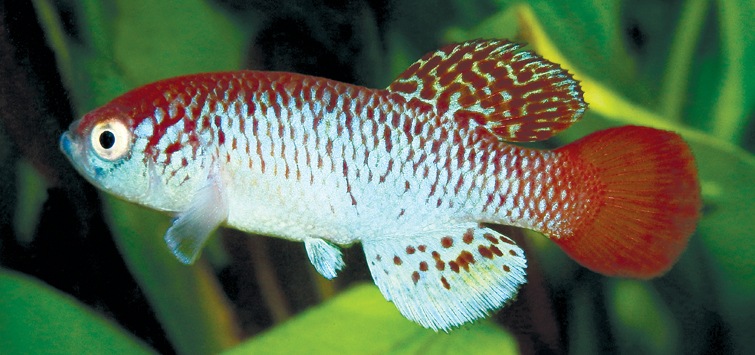
On the next leg of our trip, near Kasama, we noticed a roadside pool with four different species of wading birds standing at the edge of the water. The presence of the birds generally indicates that they likely spotted some prey in the water. Indeed, we found a lot of fish there; besides many barbs, there were specimens of N. ottoschmidti.
We headed to our next accommodation southeast of Mwanza. The lakeside garden of the hotel is a true paradise for birds. It turned out that the local fish market was within walking distance, and we saw the fishermen leaving with their boats at sunset, their lanterns shining in the darkness of the vast lake. Early in the morning, we witnessed them returning to completely cover the rocky ground of the market with the tiny fish they had caught. As they were drying, we got an overview of the variety of forms and species that dwelled in the richness of the lake.
Our next event was a day trip further south, to a place near Runere where Kaj had collected killifish in 1990. We found a very shallow drinking pool for cattle near Mabuki just about to dry out. The legs of the cows sank into the muddy substrate of the pool, and we waited impatiently for them to leave. Once they had wandered off, we managed to collect two species of Nothobranchius from the mixture of murky water and cow urine.
Along with N. ottoschmidti, there was an undescribed population that Kaj had already collected during his trip there in 1990, the form of which became known as N. sp. “Runere.” It was evident that the puddle would disappear within a few days due to the heavy evaporation in the tropical heat.
As a result of our collecting activity, some individuals of the two species were fortunate enough to escape the complete dehydration of the pool and live on, first in plastic bags and then in our tanks at home. The collected fish were adults, so we knew the required amount of eggs would already be resting in the soil to survive the upcoming dry period, ensuring the continued existence of the population once the next rainy season arrived. Along with my research colleagues, subsequent to this trip I described N. sp. “Runere” as a new species, N. moameensis.
Shortly afterward we found another pool, which was a somewhat bigger drinking place for the cattle that were there. Accordingly, cattle were in the water and drinking, but we nevertheless found seasonal fish again and successfully rescued a few specimens of N. ottoschmidti amidst the hooves of the lumbering bovines.
The next target was a population that also had an interesting history for us. In 1990, Kaj had stayed near Bujora, a small place east of Mwanza, and he had learned from the local people that there were seasonal fish in the area known in the Sukuma language as galagata. They were apparently a key ingredient in a delicious dish enjoyed in the region. The head of the local museum cordially guided Kaj around the area to search for some.
After a considerable effort, they finally managed to collect five small fish in a swampy area. Two of those very young specimens miraculously survived the trip to Europe and turned out to be a pair. They were distributed as N. sp. “Bujora,” named after the location.
On this trip, we arrived in the same area, first visiting the Bujora Museum in order to refresh Kaj’s memory of the old days, and then set out to look for the seasonal fish. After a few attempts, we followed the recommendation of a local child and finally found a pool along the road where we successfully collected some of the legendary galagata fish again. So, Kaj was successful in collecting both the Runere and Bujora fishes he had found in 1990. Recently, the Bujora population was scientifically described as N. skeltoni.
During our collecting we also found other nice inhabitants of the drainage system, such as the attractive Lake Victoria cichlid species Pseudocrenilabrus multicolor victoriae and different lampeye species. From time to time, we kept a few specimens of some of the most interesting populations. At a location near Mwamanyili, we collected some cichlids and a few specimens of L. bukobanus with black-pigmented cysts on their bodies. These are larval trematodes that mature in kingfisher birds. Apparently, the parasites do little harm to the host, as the fish were doing well.
East of the Lake, Another New Species, and Help from Some Locals
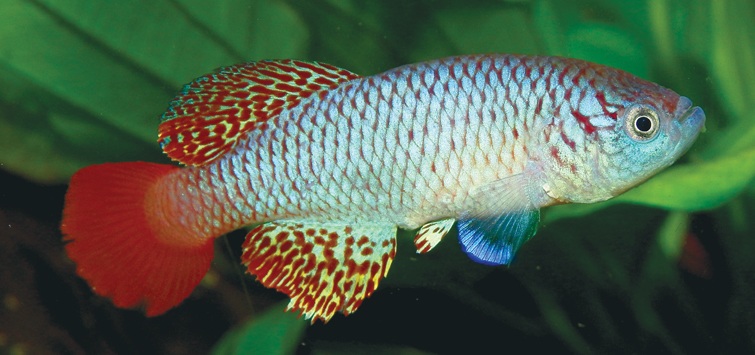
We made a detour into a region southeast of the lake near the northwestern border of the Serengeti, where we had information about another undescribed Nothobranchius species, from near Mugeta in the Grumeti drainage. We made a detour to look for this fish, which we successfully found and collected.
This was another new species my research colleagues and I described. We named it N. attenboroughi, in honor of Sir David Attenborough, in recognition of his efforts to raise awareness of the wonder and beauty of nature for so many people worldwide, promoting awareness of the importance of biodiversity conservation, and above all, inspiring so many researchers in the field of natural history, including myself and my colleagues.
Continuing our tour, we headed for the Kenyan border. After reaching Kenya, we made a detour to the Masai Mara National Park. We’ve all been to several safaris, but the program there probably beat all previous experiences.
First, we saw a pride of a dozen lions finish feasting on an eland antelope in the dawn, then leave the remains of the carcass to the hyenas. The lions slowly walked away from their prey, heading directly toward our safari vehicle. We could also observe from a close vantage point the incredible speed of the cheetahs as they chased down a young wildebeest.
After a few days of relaxation, we continued our tour. We headed toward Ahero, at the northeastern shore of the lake, where Patrick de Rham had collected an unknown new population in 1985. According to him, the species appeared to be rather widespread in the region and is known locally as oyuso. Since it was not present anymore in the hobby, our objective was to find this fish again. The weather conditions had changed slightly again. Although there was plenty of water in the area, it seemed that we had arrived after some relatively fresh rainfalls. In many puddles we searched for fish in vain; perhaps the eggs here had not yet hatched.
After several tries, we finally found another promising biotope, a roadside pool amongst houses. Based on the condition of the aquatic plants and the extent of the habitat, we thought that water might have been standing in that pool for a little while. And indeed, we managed to find the killifish species we were looking for. With some difficulty, we caught a few young fish. But we needed a few more, and after a while on a hot tropical day, collecting was tiring and every movement was a challenge.
As we started fishing, our activities attracted a great deal of interest from the local people, as is often the case in Africa. Suddenly, two young boys came up to us with a handmade net and offered to help. The youthful fishermen pulled the net through the pool and quickly caught more fish than we needed.
They told us that the pool was only used for washing clothes and that it had been filled by rainwater for about a week. The fish were obviously young in that one-week-old biotope, but we could already recognize males and females, proving again the incredibly fast development of seasonal fish in these temporary habitats. We selected a few to take with us, released the rest back into the habitat, and gave the kids some rewards. Since then, the scientific description of this species has appeared under the name N. derhami.
The Circle Closes, and Home Again
The final leg of our journey brought us along the northern shore of the lake. We crossed the last border, returning from Kenya to the country where our trip started, Uganda.
I stayed at the guesthouse again with Kaj and his family. On the terrace of the small house, I carried out the daily water changes for the fish and prepared the luggage for the trip home. For the last day, Kaj had organized another interesting excursion, a boat tour in the bay of Lake Victoria, famous for its birds, of which I took photos of more than 180 species.
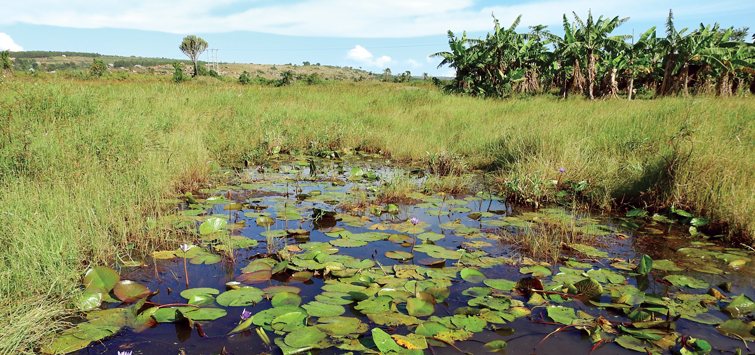
During our two-week round trip, we traveled slightly more than 1,200 miles (2,000 kilometers), including a couple of side trips. Generally, we were fortunate enough to find suitable weather conditions at most parts of our journey, and we collected several interesting annual killifishes, lampeyes, and others. The rain god had listened to our entreaties, and, thankfully, it seems our Lake Victoria fish-collecting activities did not provoke the anger of Lukwata.
TFH would like to congratulate the author and his colleagues on the publication of their paper subsequent to this expedition, describing six new Nothobranchius species, including the three new species referenced above: Nagy, B., B. R. Watters, P. D. W. van der Merwe, F. P. D. Cotterill & D. U. Bellstedt. 2020. “Review of the Nothobranchius ugandensis species group from the inland plateau of eastern Africa with descriptions of six new species (Teleostei: Nothobranchiidae).” Ichthyological Exploration of Freshwaters, 30(1):21–73.—Eds.
See the full article on TFH Digital http://www.tfhdigital.com/tfh/sep_oct_2020/MobilePagedReplica.action?pm=2&folio=44#pg47

.png?h=595&iar=0&w=2781&hash=5FD5E69473BCC22199FBFA2FB71B6033)
